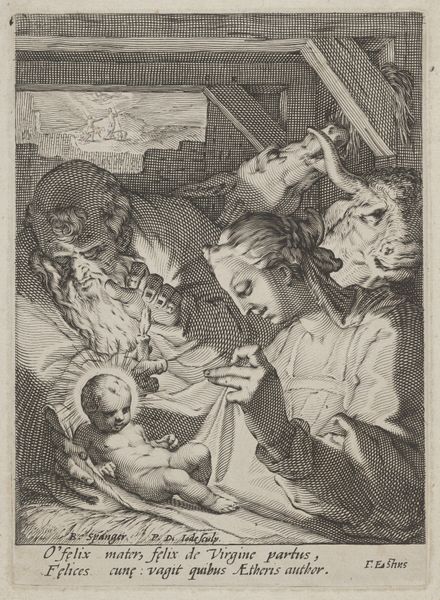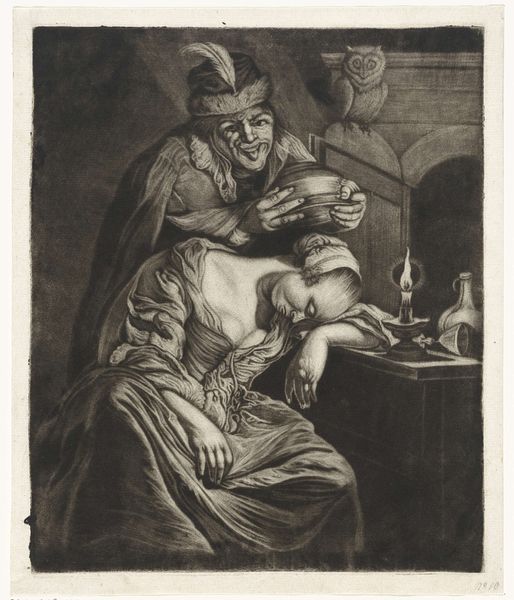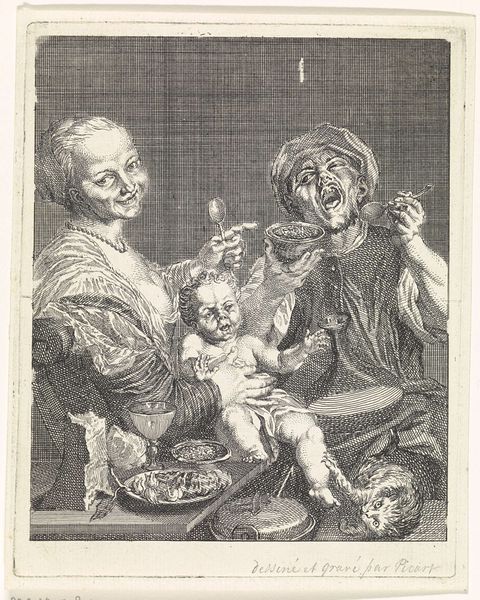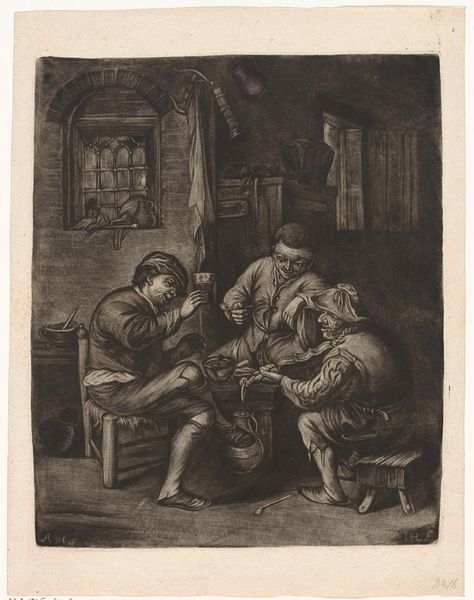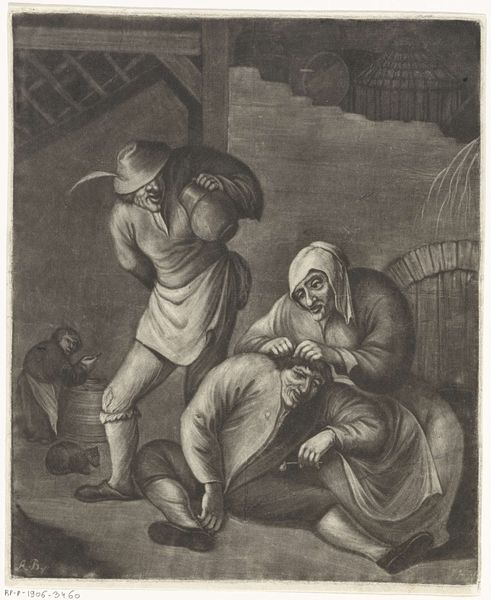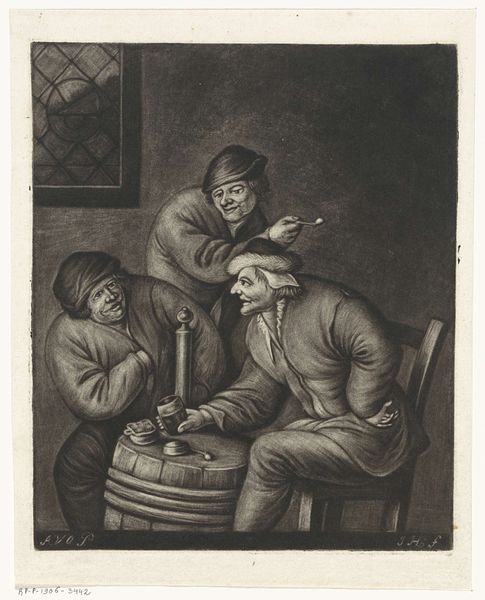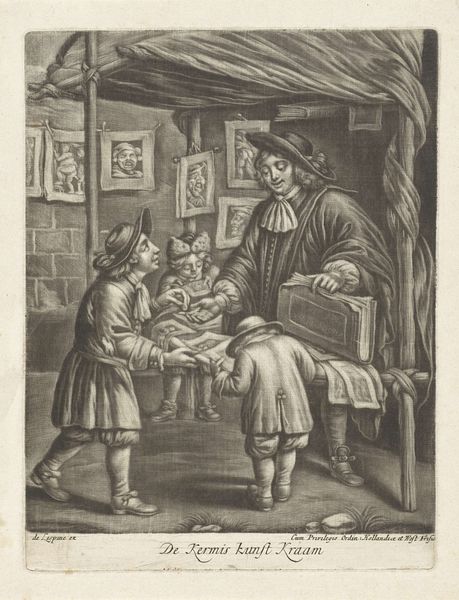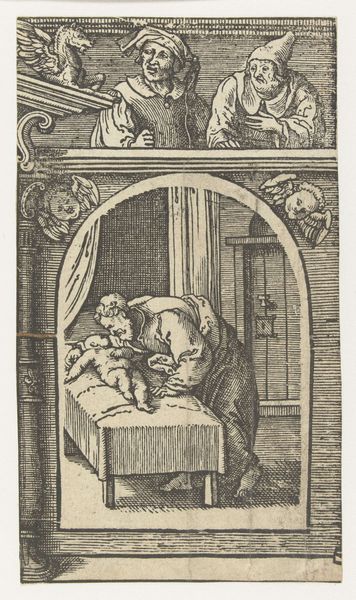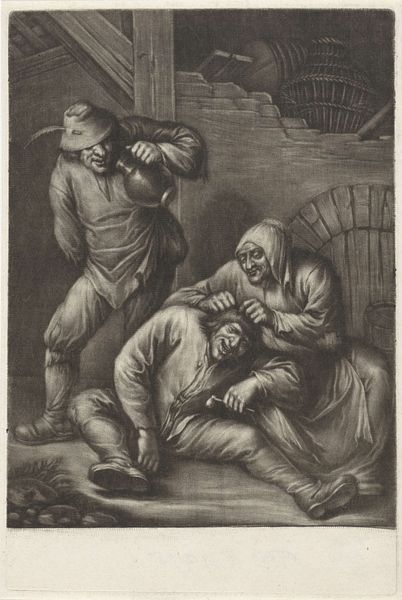
drawing, lithograph, print, etching, ink
#
portrait
#
drawing
#
baroque
#
lithograph
# print
#
etching
#
caricature
#
caricature
#
ink
#
portrait drawing
#
genre-painting
Dimensions: height 225 mm, width 188 mm
Copyright: Rijks Museum: Open Domain
Curator: Here we have a lithograph, etching, and ink drawing entitled "Twee mannen en een vioolspeler," which translates to "Two Men and a Violin Player," attributed to Jacob Hoolaart and created sometime between 1723 and 1789. Editor: My initial impression is one of boisterous merriment, perhaps a slightly drunken gathering in a dimly lit tavern. The use of ink and the etching technique gives the piece a somewhat grainy texture, almost like looking at it through time-worn lenses. Curator: Indeed. Look at the exaggerated features; it aligns with the period's tradition of caricature and genre painting. These weren’t necessarily portraits of specific people but rather types of people, often meant to satirize societal norms and behaviors. Editor: The barrel as a makeshift table is a striking detail, drawing attention to the lived experiences depicted here. What sort of establishment would we place them in? Curator: I see this work as a peek into 18th-century social life. The way they are crowded together signifies camaraderie, although it may hint at deeper social anxieties depending on what subcultures were in play at this time. Editor: I am struck by the light and shadow and the implied texture of the men's garments and the surfaces. The process and material choices support a scene of raucousness, and perhaps the clothing and materials may have signified their class? Curator: The fact it's a print also implies a wider distribution and access, potentially used to disseminate particular moral or political viewpoints beyond the immediate tavern scene. It challenges notions about how artwork becomes accessible to a broader demographic across socioeconomic lines. Editor: It brings into focus not only the making of this artwork, the labor and the artistry of that process, but also prompts to think about distribution models in society at the time, from raw material all the way to consumption. Curator: It serves as a lens to observe how power, knowledge, and cultural capital circulated through artworks during that epoch. Editor: For me, it prompts deeper reflections on materiality as it relates to social contexts and cultural practices. Curator: Considering Hoolaart's drawing in light of how identity and class played out reveals so much about Dutch society during the 1700s.
Comments
No comments
Be the first to comment and join the conversation on the ultimate creative platform.
